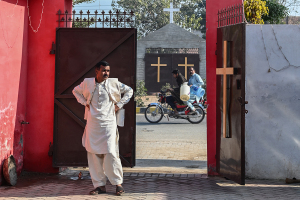Tropical Storm Lee Hammers Gulf Coast; Region on Tornado Watch
Tropical Storm Lee will cause major flooding along the Gulf Coast region this weekend, including in New Orleans and south Mississippi.
The storm formed in the Gulf of Mexico Friday afternoon. Since then, Lee has been moving very slowly northward while strengthening over the warm waters of the gulf.
Lee has puzzled forecasters since it began developing this week by pulling another overnight growth spurt. The storm came out of a virtual stall and continues moving north toward the central Louisiana coast.
Powerful rain and strong winds are currently hammering the Gulf Coast region concentrating along the south Mississippi coastline and the outer edges of New Orleans.
Residents are being cautioned to stay inside and watch for tornado alerts throughout the day.
“I cannot see anything through this thick rain and it is rain that is so powerful it sounds like a train,” said Biloxi, Miss. resident Richard Gessenger.
“Traffic has stopped to a standstill on the roads and it is quite eerie outside. There are really not that many folks outside."
The storm is expected to reach the Louisiana coast full force Saturday afternoon and bring up to 20 inches of rain to southeast Louisiana and southern Mississippi counties over the next few days, including to New Orleans, which was battered by Hurricane Katrina in 2005, the U.S. National Hurricane Center said today.
At 12:00 p.m. CST, Lee was 45 miles southwest of Morgan City, with maximum winds of 60 mph, the hurricane center said. Lee's winds were expected to stay below the 74 mph threshold of hurricane strength.
Potential flooding in low-lying New Orleans are bringing back memories of Hurricane Katrina, which flooded 80 percent of the city, killing 1,500 people and causing more than $80 billion in damage. Half of the city lies below sea level and is protected by a system of levees and flood gates.
Lee's storm surge, projected around 4 to 5 feet, is far short of the 20-feet-plus driven by Katrina.
"Everything looks pretty good right now," said Ken Holder, spokesman for the U.S. Army Corps of Engineers, which manages the city's flood defenses.
The National Hurricane Center is also issuing advisories on Hurricane Katia in the Atlantic.
"Lee's winds could strengthen further as the storm churns over very warm waters today," according to NWS meteorologist Matt Alto.
He also cautions that "enough rain will pour down that winds could cause significant damage in some communities. Trees and power lines will topple over easily as the ground becomes water-logged."
Large sail boats are breaking lose from the moorings and going over the sea wall in parts of south Mississippi Saturday.
Forecasters say thunderstorms producing gusty winds have already, and will continue to down trees and cut power in some cities and towns along the Gulf Coast through the weekend.
Thousands of customers were without power early on Saturday morning in the southern parishes of Louisiana due to gusty winds from the lashing of the outer bands of Lee.
Waterspouts and tornadoes will also be a threat from southeastern Louisiana to the Florida Panhandle near and to the east of the center of Lee this weekend.
The tornado threat will be especially high as Lee moves onshore by midday today. Low-lying parishes around New Orleans saw rising waters, which covered some roadways in Plaquemines and St. Bernard parishes, but no homes or businesses were threatened. Some residents in Jefferson Parish were ordered to evacuate.
"We need to get this thing onshore and get it through here," Plaquemines Parish president Billy Nungesser told a local television station.
Lee will weaken once it hits land, but it will lose strength more slowly than normal due to the marshy nature of the Louisiana coast, the hurricane center said.
In New Orleans, severe downpours caused some street flooding in low-lying areas early Saturday, but pumps were sucking up the water quickly. Lee's storm surge so far had not penetrated levees along the coast, said National Weather Service forecaster Robert Ricks in Slidell, La.
A dry season has plagued areas along the Gulf Coast and residents were hoping for rain. "Sometimes you get what you ask for," New Orleans Mayor Mitch Landrieu told reporters Saturday. "Unfortunately it looks like we're going to get more than we needed."
Lee's northeasterly track could bring heavy rains to Mississippi, Alabama, Georgia, Tennessee and the Appalachian Mountains next week.
Follow tropical storms and hurricane threats at http://www.weather.gov/.





























